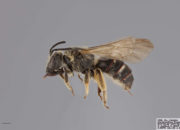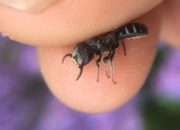This group covers a handful of large Lasioglossum species with white hair bands. They are moderately common through the summer, with males active from July into October. Two species formally placed in subgenus Lasioglossum have now been moved to the subgenus Leuchalictus, and two species in other subgenera are superficially quite similar. All are covered here for simplicity.
Females in this group have bold white hair bands on the top of their middle abdominal segments. Males have large heads, often with a yellow mark on the clypeus.
Similar genera: Furrow Bees (Genus Halictus) can be very similar, but have white hairs on both the top and bottom of each abdominal segment. See also the dark Lasioglossum subgenera, which can be similar, especially in the males.
Species-level ID
Most females are challenging or impossible to ID from photos, but with practice some males can be distinguished by the length of the mandibles and color of the legs.
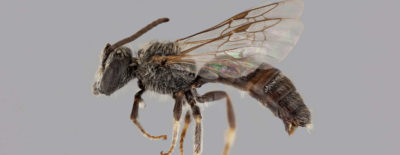
White-banded Sweat Bee (Lasioglossum leucozonium)
Subgenus Leuchalictus. Males with short mandibles and yellow basitarsi and leg joints.
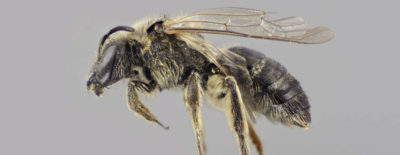
Bull-headed Furrow Bee (Lasioglossum zonulum)
Subgenus Leuchalictus. Males with short mandibles and dark legs.
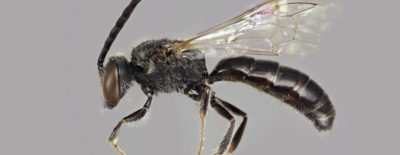
Band-footed Sweat Bee (Lasioglossum cinctipes)
Subgenus Evylaeus. Males have yellow basitarsi and tarsi.
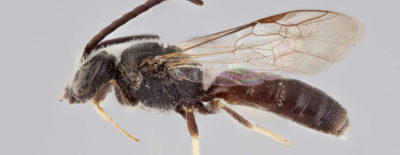
Truncate Sweat Bee (Lasioglossum truncatum)
Subgenus Sphecodogastra. Males have yellow basitarsi and tarsi.
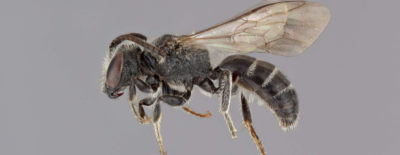
Leathery Sweat Bee (Lasioglossum coriaceum)
Subgenus Lasioglossum. Males with very long mandibles and dark legs
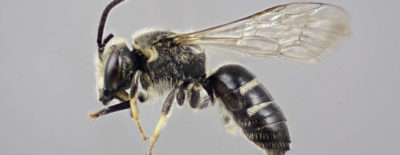
Pointed Sweat Bee (Lasioglossum acuminatum)
Subgenus Lasioglossum. Males with very long mandibles and yellow basitarsi
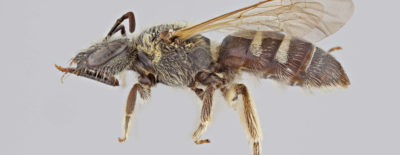
Bald-spot Sweat Bee (Lasioglossum paraforbesii)
Subgenus Lasioglossum. Rare. Males with yellow basitarsi.
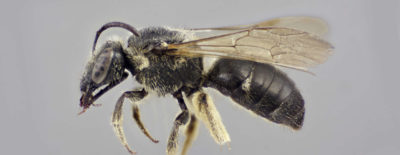
Athabasca Sweat Bee (Lasioglossum athabascense)
Subgenus Lasioglossum. Rare. Males with dull brownish basitarsi.
Unless otherwise specified, specimen photos in the grid are courtesy of Margarita Miklasevskaja at PCYU with funding from NSERC-CANPOLIN. Males are shown when photos are available, but females are shown for L. zonulum, L athabascense, and L. paraforbesii.
